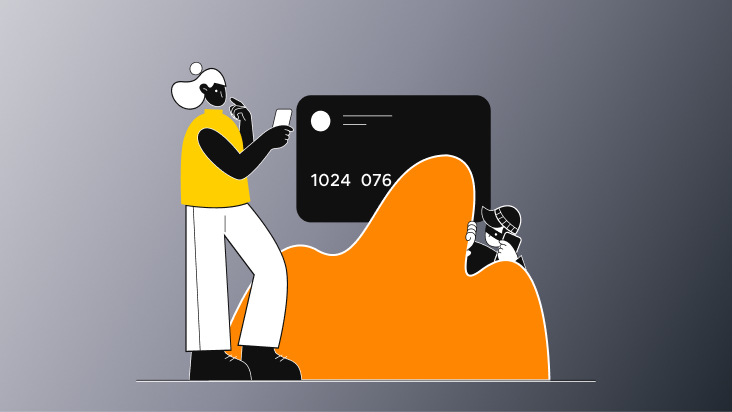When you pick up your phone, open a laptop, or even ask Alexa to play your favorite song, you’re relying on millions of lines of software and countless protocols humming quietly in the background. Most of us rarely think about that invisible machinery — until something goes wrong.
Despite tremendous advances in software engineering and security practices, one issue remains stubbornly persistent: vulnerabilities. These weaknesses in code or configuration are the digital equivalent of cracks in a castle wall — and adversaries are constantly probing for ways to slip through.
In this article, I’ll walk through what vulnerabilities are, how the CVE (Common Vulnerabilities and Exposures) program helps us keep track of them, where its limitations lie, and what you can do to reduce your own risk.
What is a Vulnerability?
A vulnerability is any flaw in software, hardware, or process that attackers can exploit. The consequences can be wide-ranging:
- Gaining unauthorized access to systems
- Escalating privileges to take control
- Injecting malware or disrupting operations
- Stealing, corrupting, or manipulating sensitive data
- Establishing a foothold to spread laterally across a network
Some vulnerabilities are purely technical, such as unpatched software or weak passwords. Others arise from human factors, like falling for phishing emails or mismanaging access permissions.
The severity also varies. Some bugs are inconvenient but relatively benign; others become front-page news. Consider the 2024 National Public Data breach, which affected hundreds of millions of people and exposed gigabytes of sensitive data, including names, addresses, and Social Security numbers. These records were put on sale by a hacker group behind the breach. There is a possibility that hackers were able to infiltrate NPD due to its poor password policies. In the aftermath of the breach, a user discovered that an NPD-affiliated site, recordscheck.net, hosts an archive containing plain-text passwords and employee usernames.
How the CVE Program Helps the Cybersecurity Community Address Vulnerabilities
New vulnerabilities are identified daily by security vendors, researchers, and organizations. Researchers identified and assigned CVE IDs to a total of 40,301 vulnerabilities in 2024 — a 38.65% increase from the previous year. By 2025, they will have identified 26,107 vulnerabilities, and they expect this number to keep rising

Dealing with a large quantity of vulnerabilities requires proper documentation, categorization, and classification. That’s where the CVE (Common Vulnerabilities and Exposures) Program comes in.
Launched in 1999 as a project of MITRE Corporation, a nonprofit overseeing research institutions, the program provides a unique identifier – a “CVE ID” – for each publicly known vulnerability. The main goal of the program, as stated on their website, is: “Identify, define, and catalog publicly disclosed cybersecurity vulnerabilities.” Think of the CVE program as a Rosetta Stone for security: by giving each flaw a common name, researchers, vendors, and defenders can be confident they’re talking about the same issue.
Prior to 1999, no unified catalogue of vulnerabilities or standard for naming and categorization existed. In an industry where collective effort is crucial to the successful mitigation and prevention of risks, the absence of standards created an obstacle to practical cooperation between security vendors and researchers. Security professionals siloed vulnerability research and assessment data, and even when they shared it, they had to put in extra effort to ensure they were discussing the same vulnerability.
Over the years, the CVE program underwent structural changes to address the challenges posed by the skyrocketing quantity of vulnerabilities. Nowadays, new vulnerabilities are assigned IDs and added to the CVE list not only by MITRE but also by partner organizations with CNA status, also known as “CVE numbering authorities”.
Components of a CVE Record for Vulnerability
A typical CVE entry includes:
- CVE ID (e.g., CVE-2025-6558) – a unique reference number
- Description – a short summary of the flaw and affected products/versions
- References – links to advisories or technical details
- CNA – the organization that assigned the CVE (typically, you may find a link to the source publication in the “References” section of the record.
The CVE description provides a summary of the vulnerability and identifies the affected products or software titles, including their versions. More importantly, however, CVEs also carry a CVSS (Common Vulnerability Scoring System) score, which rates severity on a scale from 0 to 10. A critical flaw that allows remote code execution with little effort may earn a 9 or 10, while a minor issue might score a 2 or 3.
A key part of each CVE record is the “CVSS score”. It is an acronym for Common Vulnerability Scoring System. The latest CVSS 4.0 version base score describes the severity of the vulnerability based on its fundamental traits:
- Exploitability metrics group or how easy it is to exploit a vulnerability: attack vector, complexity of execution, requirements, and the need for user interaction for the attack to succeed.
- Potential impact metrics group refers to the possible consequences for the affected entity in the system/network, such as a vulnerable device or other systems within the same network. Score ranges from 0 to 10 (critical). This score helps prioritize the need for addressing specific vulnerability mitigation.
Taken together, this information helps organizations prioritize patching and mitigation.
Additional Helpful Metrics Groups that are Calculated Separately from the Base Score:
CVSS Threat metrics group describe possible changes related to vulnerability that might happen over time, whether there is evidence of an existing exploit code, attack instructions, or active vulnerability exploitation has been reported and confirmed
The CVSS Environmental metrics group focuses on the characteristics of the vulnerability applicable to a unique environment, including the availability of mitigation, potential effects on the confidentiality/trustworthiness of data on the vulnerable system, or the general availability of the system in the event of successful exploitation of the vulnerability by an attacker.
One more item present on the CVE record is the reference to the CWE (Common Weakness Enumeration) identifier. MITRE also maintains the CWE list of weakness types.
The concept of weakness refers to a set of conditions in software or hardware code that, under certain circumstances, can lead to security flaws.Here is an example of one of the weaknesses, CWE-863 Incorrect Authorization, where you may see the description of common consequences of such a weakness and the list of real-life CVE records related to it.
Lastly, a CVE record will always contain information about the vulnerability’s exploitation in the wild, if confirmed. The CISA (National Coordinator for Critical Infrastructure Security and Resilience) also maintains a catalog of known exploited vulnerabilities on its website.
The Limitations of CVEs and CVSS
While the CVE program and CVSS scoring system give us a standardized way to talk about vulnerabilities, they have important limitations. CVSS is designed to measure technical severity in isolation — not overall risk in the real world.
In practice, risk is far more contextual. Consider a few examples:
- A device vulnerable to remote exploitation may score a “critical” 9.8 on CVSS. But if that device is air-gapped and not connected to any external network, the real risk to the organization is minimal.
- A flaw on a non-critical internal system may score higher than a flaw on a mission-critical customer-facing system. From a business perspective, it would be unwise to patch the former first just because the CVSS number is larger.
- Patching itself carries risk. Imagine a vulnerability on a medical device implanted in a patient. Applying a patch could require surgery — an unacceptable tradeoff compared to the vulnerability’s potential exploitation.
These examples highlight a key truth: severity is not the same as risk. CVSS helps prioritize in a vacuum, but true risk management requires layering in business impact, threat likelihood, patch feasibility, and even human safety.
Patch-Gap Reality
Even when patches exist, deploying them is not always straightforward. Organizations often face delays — sometimes weeks or months — between patch availability and deployment. Attackers exploit this “patch gap” aggressively.
In fact, threat actors routinely study patches as soon as they are released. By analyzing the changes in the code, they can quickly deduce what vulnerability has been fixed. In effect, the patch itself becomes a blueprint for exploitation. This means that once a patch drops, the likelihood of exploitation rises sharply. Time is no longer on the defender’s side — it’s a race.
The Role of AI
Artificial intelligence is supercharging both sides of this race. On defense, AI helps identify vulnerabilities more quickly, including zero-days. On offense, attackers are leveraging AI to:
- Analyze code diffs from patches to spot vulnerabilities at machine speed
- Generate exploit code automatically, at scale
- Shorten the time from patch release to active exploitation
The net result: exploitation timelines are collapsing. Where attackers once took weeks or months to weaponize a flaw, AI can compress that window to hours or days.
Context Gives Us Wisdom
This is why organizations increasingly complement CVE/CVSS data with:
- Business context mapping – aligning vulnerabilities with asset criticality, data sensitivity, and regulatory exposure
- Threat intelligence – factoring in whether a vulnerability is actively being exploited in the wild
- Operational impact analysis – weighing the cost and risk of remediation against the risk of leaving the system as-is (with compensating controls, if necessary)
- Compensating controls – using segmentation, isolation, or intrusion prevention when patching isn’t viable
Ultimately, CVEs give us the vocabulary to describe vulnerabilities. But context gives us the wisdom to manage them intelligently.
Security Advisories and Zero-Day Vulnerabilities
Periodically, albeit with increasing frequency, cybersecurity news reaches mainstream media, and the occasion is rarely a cheerful one. On the contrary, in most cases, we learn about another data breach or ransomware attack spreading across the Internet. Often, these attacks begin with threat actors exploiting a vulnerability in the targeted application, computer system, or network. Most likely, the news report mentions a CVE associated with the attack.
In a worst-case scenario, threat actors can identify a vulnerability and create an exploit for it before the target is aware that a vulnerability exists. These vulnerabilities are called “zero-day” for a reason, as they often catch targeted organizations or software vendors off guard, with no patch available to mitigate the issue..
Once the vulnerability exploitation is detected, the vendor must race against the clock to assess the risks, provide a security advisory, and deliver a patch.
Just recently, Google released its security advisory regarding a zero-day CVE-2025-6558 vulnerability in its Chrome browser, confirming that developers are aware of an existing exploit in the wild. Considering the number of Chrome users, even Forbes reported on this issue.
As you may see, all of the fantastic functionality of modern apps and products, the perks of living in a connected world, come with a serious tradeoff, and no organisation or individual is exempt from security risks.
Practical Steps to Protect Yourself
While you can’t prevent vulnerabilities from existing, you can dramatically reduce your exposure:
- Keep software updated – install patches promptly, whether from Microsoft, Apple, Google, or smaller vendors.
- Use layered defenses – a modern antivirus solution such as UltraAV, which offers On-Deman scanning, ransomware protection, and anti-phishing features is an indispensable aid for identifying malware and phishing attacks that exploit vulnerabilities.
- Rely on official sources – download apps from trusted stores, not “cracked” sites.
- Pay attention to advisories – if you see a CVE alert for a product you use, apply the recommended fixes.
- Strengthen authentication – account takeover risks can be mitigated through the use of unique, complex passwords (managed with a password manager like PassWatch, which is offered at no extra charge with a UltraAV subscription) and multi-factor authentication (particularly for accounts related to financial institutions and payment mechanisms, like PayPay, Venmo, Zelle, and others.
Final Thoughts
CVEs remind us that modern software, for all its benefits, is not infallible. But they also reflect something encouraging: the global security community’s commitment to catalog, share, and remediate vulnerabilities openly.
The challenge — and the opportunity — lies in moving beyond severity scores to a richer, more contextual understanding of risk. In a world where AI accelerates both defense and attack, that broader perspective is no longer optional; it’s essential.
By staying informed and taking a few proactive measures, both individuals and organizations can turn what might feel like an overwhelming threat landscape into something more manageable — and ultimately, safer.




